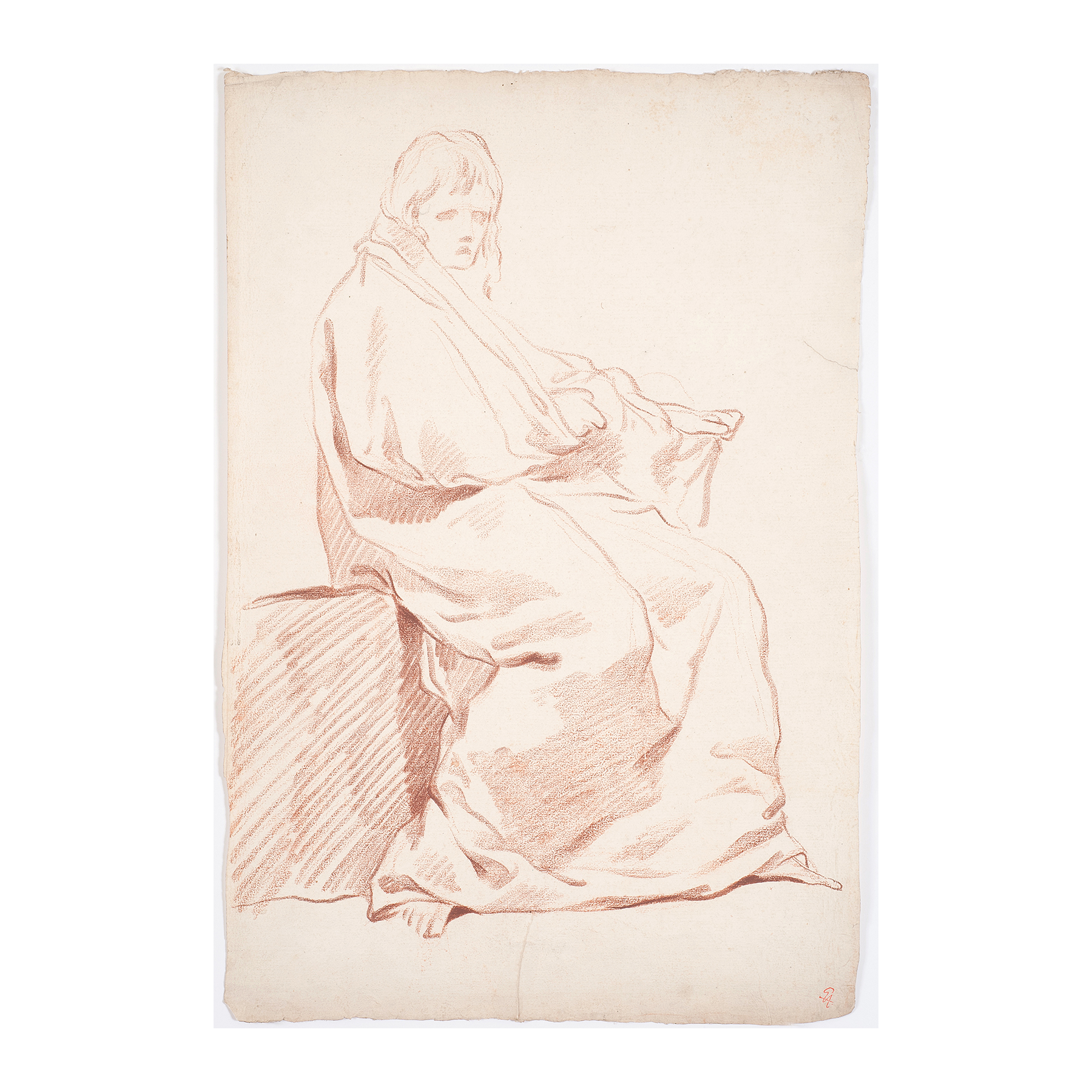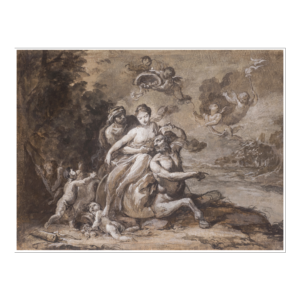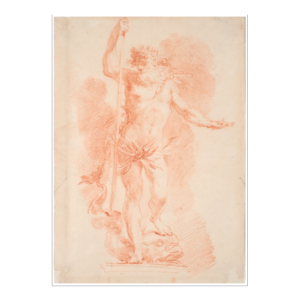Jean Barbault (attributed to)
Viarmes 1718 – Rome 1762
Study of a draped figure
Red chalk.
Watermark fleur-de-lis in a circle with letters, possibly C and B.
440 x 287 mm – 17,32 x 11,3 in.
Provenance – Philippe Herrmann, his mark (Lugt 1352 a).
This large and impressive study of a draped figure – an exercise regularly practiced by the students of the French Academy in Rome – can be compared to two sheets in the Marseille Musée des Beaux-arts, Laying draped male figure (D 389) and A Supplicant (D390). Their attribution was the object of a debate organized by the association Bella Maniera (see Bella maniera, Feuilles en quête d’auteur 1/2). These two studies jointly entered the collection of the Marseille Museum in 1899 (gift Hippolyte Mireur). Although they were traditionally attributed to the French sculptor André Lebrun, they are not accepted as such by Camille Bruneaux who is working on the catalog of the artist’s drawings (see L’art et la manière, dessin français du XVIIIe siècle des musées de Marseille, exhibition catalog, 2018-2019, p. 220-223). An attribution to Charles François Hutin was proposed for D390 : its linear shape, with more vigorous, long, and parallel hatchings are more reminiscent of the study sheets by Charles-François Hutin in the Ecole Nationale Supérieure des Beaux-Arts. But one could argue that the elongated shape of the figure and its straight, smooth drapery would also require more vigorous and straight strokes. Moreover, it appears that D 390 could be a preparatory study to one of the figures of The Death of Dido painted by Barbault (Nancy, musée des Beaux-arts). On the grounds of this relation, a third study, very similar to D 389 was equally attributed to Jean Barbault by Gallery Le Serbon. Is the resemblance with the Barbault painting coincidental, the artist using an after all classical figure, or is the drawing preparatory to the figure? Whatever may be the answer, our sheet is particularly close to D389 and to the sheet in Gallery Le Serbon : the graphic line is more fluid, almost making loops for the hands and the face is condensed in a few sulky strokes. Moreover, the draperies are more bulky and mellow than those of the figures by Hutin and they remind of the Orientals painted Barbault for the series of La Caravane du Sultan à la Mecque for the 1748 carnival in Rome. We are therefore tempted to keep the attribution to Jean Barbault at least for these three sheets.
Condition report – Small crease lower center, a repaired tear upper right, irregular edges.






